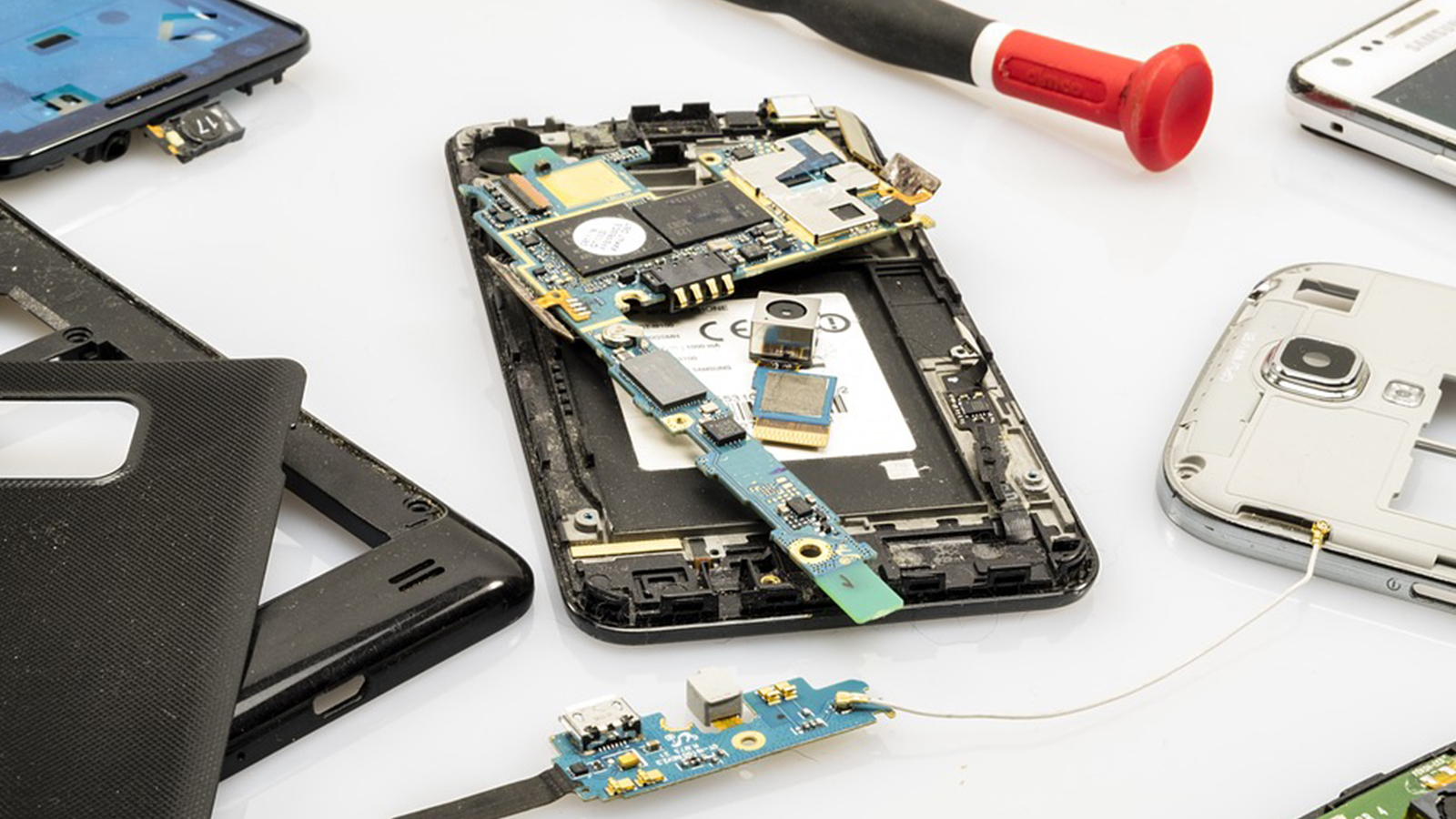
Pass the Digital Right to Repair Act
Our legislative agenda for 2024 lays out our vision for what we hope to accomplish in the coming year to make Alaska greener this year.
Updated
Take Action
Clean water to drink and clean air to breathe; healthy oceans, lakes, and rivers that are safe for fishing and swimming; flourishing ecosystems that support the wildlife we love and that fill our freezers; clean sources of energy that don’t pollute and never run out — all this should be the heritage we leave to future generations. Defending our environment requires independent research, tough-minded advocacy and spirited grassroots action. With supporters from all walks of life, Alaska Environment takes the kind of action that wins results. With a divided political landscape, it is more important than ever to find common ground around the environmental values so many Alaskans share.

Solar panels on Ursa Major Distilling in FairbanksPhoto by Dyani Chapman | TPIN
For decades, we have had the power to harness clean, abundant energy from the sun and the wind. In 2024, it can be done more efficiently and cheaply than ever before. However, we’re still producing, consuming and wasting energy in ways that do lasting damage to our environment and our health. Both the state and communities within Alaska need to set aggressive requirements and goals to transition our energy systems towards clean and renewable sources of energy. Additionally, the state needs to ensure there is ample financial support and incentives for renewable energy projects.
Senator Tobin and Representative Sumner have introduced matching bills-SB 101 and HB 121– that would require railbelt utilities to generate 25% of their electricity from renewable sources by 2027 and 80% by 2040 . The bills are cosponsored by Senators Gray-Jackson and Kawasaki and Representatives Mears, Mina, and Armstrong respectively. Send an email of your support to your legislators here: Pass the Renewable Energy Portfolio Standard
When individuals have solar power on their roof that are connected to the grid, their electric bills decrease because they only pay for the energy they consume beyond what their solar panels produce. Net metering adds another benefit by compensating solar users for the surplus electricity they contribute to the grid. Currently, in Alaska, utilities calculate net usage on a monthly basis. Customers sell excess electricity to the utility at the rate the utility pays for electricity, and they buy any deficit at the higher customer rate. The challenge in Alaska is the significant variation in solar potential throughout the year. Many people generate more electricity than they need annually but still end up paying for some electricity at the higher rate during the darker winter months.
Introducing an annual net metering policy would enable credits generated during sunny months to offset the electricity costs during darker months. This setup encourages faster adoption of solar power as the initial investment pays off more quickly, making it a more attractive option for consumers.
Not everyone can add solar power to their roof due to incompatible location, ownership, or personal finances. Allowing folks to buy into community solar projects will allow more people to invest in and reap the benefits of renewable energy. Senator Wielechowski introduced SB 152 last spring with cosponsorship from Senator Dunbar.
Not only are electric technologies like heat pumps and induction stoves more efficient, they can also be powered by renewable energy like solar and wind rather than fossil fuels. Federal tax credits and rebates passed under the Inflation Reduction Act makes it easier and more affordable than ever to electrify our buildings. We need as many Alaska families and businesses as possible to take advantage of those credits and rebates to electrify their homes.
We can’t mitigate global warming or reduce air pollution without moving away from a transportation system that relies on congested roads and polluting cars. We need more options like expanded and improved rail, ferry and bus systems, more electric vehicle charging infrastructure, and better walking and biking paths. The Alaska Department of Transportation should set a goal for freight and transportation to be free of greenhouse gas pollution by 2050. Communities and regions should take advantage of federal funds to move our transportation infrastructure toward a sustainable and pollution-free system.
The Bipartisan Infrastructure and Jobs Act provides funding for school districts to purchase electric school buses to replace aging diesel buses. School districts throughout Alaska should apply for the funding next summer.
There is also significant federal funding for electric vehicle charging, and Alaska is set to receive approximately $52 million over the next five years. The state should work to ensure that the implementation plan goes smoothly, and that the installations allow as many people as possible to be confident about the range of electric vehicles.
The ferry is vital and relatively efficient public transportation for much of southern Alaska. To maximize its impact, the ferry needs to be fully funded and include sufficient stops and frequency to mitigate the need for new roads and limit inefficient air travel. Federal funding and some recent state dedicated funds should help, but it will take more attention to ensure that the ferry is as robust as it needs to be.
We have to stop trashing our planet. Every day, we extract natural resources to produce goods that are used — often just for a few minutes or days or months — before they’re thrown into landfills, incinerators, or the natural environment. To protect wildlife and their habitat, conserve natural resources, and address climate change, we need to reduce consumption, ensure products are built to last, and shift policies toward a system where all materials are reused, recycled or composted in a continuous cycle.
When something breaks, you fix it. That’s just common sense. But manufacturers of everything from phones to appliances to tractors intentionally make things difficult to repair, forcing us to buy new replacements too often. For example, Alaskans dispose of 800 cell phones per day, and only 15 to 20 percent of electronic waste is recycled in the U.S. E-waste is full of toxic materials that contaminate our water, soil, and air. This is a particularly significant issue for communities in rural Alaska who use unlined landfills and practice burning to reduce volume. We are working to tackle planned obsolescence through corporate action, and pass legislation to make sure consumers and small businesses have access to the parts, tools and service information they need to repair products so we can keep things in use longer and reduce waste.

Last Spring Senator Dunbar introduced the Digital Right to Repair Act: SB 112. It’s cosponsored by Senators Geissel, Bjorkman, and Gray-Jackson. Send an email of support to your legislators here: Pass the Digital Right to Repair Act
Plastic pollution is a major issue for Alaska’s waterways and coasts. Everyday people are throwing away tons of single-use cups, containers and other plastic “stuff.” Plastic and microplastics persist in the environment for hundreds of years and are associated with harm to wildlife, public health, and marine ecosystems. Nothing we use for a few minutes should be allowed to pollute our oceans and rivers and threaten wildlife for centuries.
The first step to reducing plastic pollution is making less new plastic. Communities and legislators in Alaska should oppose proposals to permit bringing facilities online explicitly to make new plastics, or policies that will promote plastics incineration, which pollutes our air and water, under the guise of “advanced” or “chemical recycling”. Incineration does not dispose of microplastics. The legislature should reject HB 143.

A bear catches salmon in KodiakPhoto by Lisa Hupp/USFWS | Public Domain
From the Bering Sea to the caribou roaming north of the Brooks Range to the temperate rainforests of southeast and whales gracing our coasts, our state is home to one of the largest arrays of priceless landscapes, waterways, and wildlife. And yet, pollution and development threaten this abundance. New projects must be thoughtfully and fully considered to ensure they maintain cleanliness of our water, connectivity of habitat for wildlife, and the health of our ecosystems. Along with a variety of other advocacy groups, we’ve established principles for good infrastructure investments and will work to ensure that as we build, we protect and care for the land, water, and wildlife we love and rely on. We must prevent pollution at the source and keep our healthy ecosystems thriving.
Many of Alaska’s offshore ecosystems are struggling with collapsing populations of salmon, crab, and herring. Fishery management needs to be nimble and quickly responsive to changes in ocean temperature, acidity, and other impacts of climate change. Bycatch, especially from trawl fleets in sensitive systems, needs to be curtailed sufficiently for struggling populations to rebound. Additionally, we must protect marine ecosystems from other human activities that can disrupt systems including drilling offshore and mining in headwaters.
Everyone deserves clean water to drink. But many Alaskans are drinking water tainted by toxic chemicals called PFAS, which are linked to cancer and other severe illnesses. We’re supporting legislation and corporate action to stop the use of PFAS in consumer products, clean up contamination in our water and communities, and to hold industry accountable for damage they have caused.
Ask your lawmakers to ensure that electric utilities add more renewable energy into their mix.
Take Action
Dyani is the state director of Alaska Environment and runs campaigns to promote clean air and water, open spaces, and a livable climate in Alaska. She lives in Anchorage and loves to hike, ski and hang out with her family.
